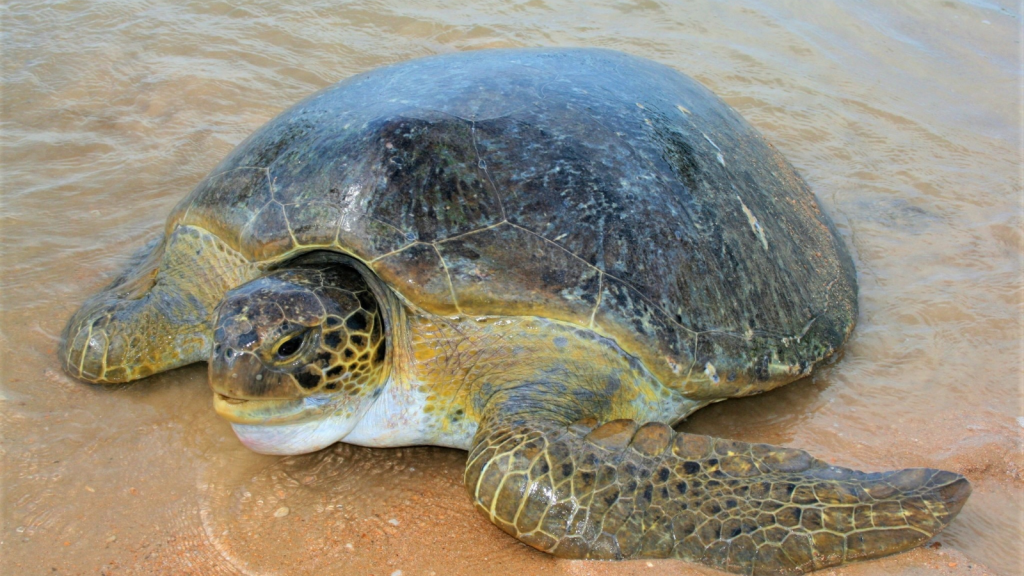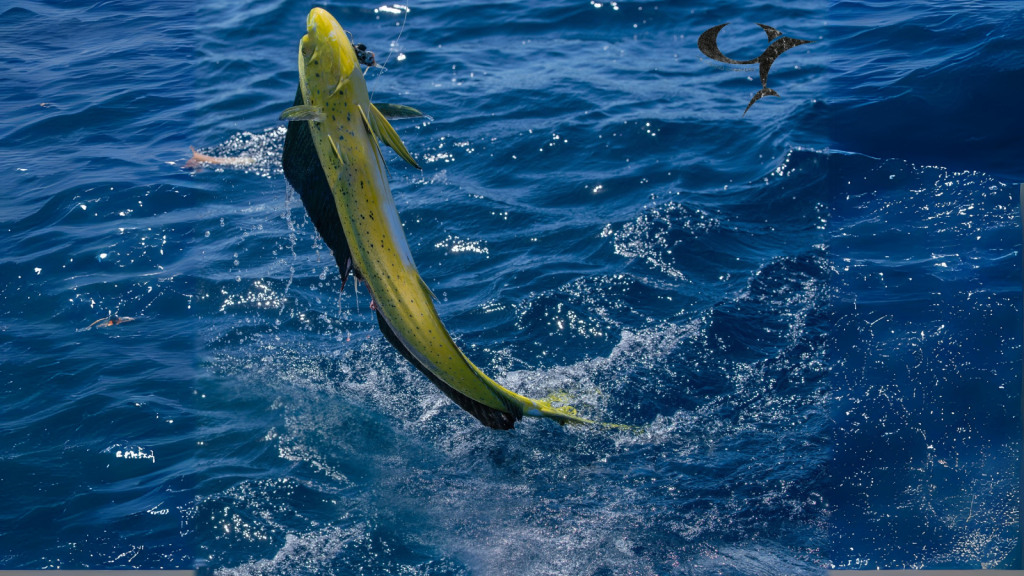Jellyfish might seem like unlikely prey, with their stinging tentacles and ghostly appearance. Yet, these gelatinous creatures are a vital food source for many ocean dwellers. From tiny fish to massive sea turtles, a surprising variety of animals have developed ways to safely consume jellyfish. Some predators have evolved special adaptations to handle the jellyfish’s stings, while others target specific parts of the jellyfish to avoid injury. Understanding who eats jellyfish helps us grasp the complex web of ocean life and the unexpected connections between species. Here are 15 fascinating creatures that have jellyfish on their menu.
1. Leatherback Sea Turtles

These giant sea turtles are jellyfish specialists. Leatherbacks have sharp, pointed beaks and spiny throats that help them catch and swallow slippery jellyfish. They can consume their body weight in jellyfish each day. Leatherbacks often migrate long distances to follow jellyfish blooms, showing how important these creatures are to their diet. Their powerful jaws and flexible mouths allow them to compress the water out of their prey, concentrating the nutritional value of the jellyfish.
2. Ocean Sunfish

Also known as mola mola, these bizarre-looking fish are avid jellyfish eaters. Ocean sunfish have thick, rubbery skin that protects them from jellyfish stings. They use their powerful beak-like mouths to crush jellyfish before swallowing them whole. Despite their massive size, ocean sunfish feed almost exclusively on jellyfish and other soft-bodied creatures. Their unique body shape, with a truncated tail fin, allows them to manoeuvre efficiently through jellyfish-rich waters.
3. Blue Sea Slugs

These small, blue nudibranchs have a clever trick for eating jellyfish. They consume the stinging cells of jellyfish and store them in their own bodies for defense. Blue sea slugs can then use these stolen stingers to protect themselves from predators. They often float upside down, mimicking jellyfish to catch their prey. This remarkable ability to repurpose jellyfish stingers is known as kleptocnidae, literally meaning “stolen stingers.”
4. Bearded Goby

This small fish thrives in areas where jellyfish blooms are common. Bearded gobies have developed a resistance to jellyfish toxins, allowing them to safely nibble on jellyfish tentacles. They play a crucial role in their ecosystem by turning jellyfish biomass into food for larger predators. The goby’s ability to thrive in jellyfish-rich waters has made it a key species in some marine ecosystems, particularly in areas where jellyfish populations have exploded due to overfishing of their predators.
5. Loggerhead Sea Turtles

While not as specialized as leatherbacks, loggerhead turtles still enjoy a jellyfish meal. They have powerful jaws that can crunch through jellyfish bodies. Loggerheads often target the jellyfish’s bell, avoiding the stinging tentacles. Their shells provide protection from any stings they might encounter. Loggerheads have been observed using their flippers to tear larger jellyfish into more manageable pieces before consuming them.
6. Spiny Dogfish Sharks

These small sharks are opportunistic feeders that won’t pass up a jellyfish snack. Spiny dogfish use their sharp teeth to tear jellyfish into manageable pieces. They’ve been observed feeding on large jellyfish blooms, helping to control jellyfish populations in some areas. The dogfish’s tough skin provides some protection against jellyfish stings, allowing them to feed on these gelatinous creatures with minimal risk.
7. Hawksbill Sea Turtles

Known for their beautiful shells, hawksbill turtles also have a taste for jellyfish. They use their pointed beaks to pluck jellyfish from the water. Hawksbills are more selective eaters than leatherbacks, often targeting specific parts of the jellyfish. Their narrow, pointed beaks allow them to reach into crevices and coral reefs to extract jellyfish that may be hiding or drifting in these areas.
8. Fulmar Seabirds

These seabirds have been observed feeding on jellyfish at the ocean’s surface. Fulmars use their hooked beaks to grab and tear apart jellyfish. They seem to prefer smaller jellyfish species that are easier to handle in flight. Fulmars have a unique ability to store and projectile vomit stomach oil, which they use for defense and to feed their chicks, and this oil may help them break down the tough proteins in jellyfish.
9. Billfishes

Swordfish, marlins, and sailfish all belong to this group of large, predatory fish. They use their long, pointed bills to stun or kill jellyfish before eating them. Billfishes are fast swimmers, allowing them to catch jellyfish that might drift away from slower predators. Their bills are equipped with sensitive organs that can detect the electrical impulses of nearby prey, including jellyfish, making them efficient hunters even in low visibility conditions.
10. Chum Salmon

During their ocean phase, chum salmon often feed on jellyfish. They target smaller jellyfish species or juveniles of larger species. Chum salmon have been observed feeding on jellyfish near the surface, where these gelatinous creatures often gather. The salmon’s ability to digest jellyfish helps them survive in areas where more traditional prey items may be scarce, especially during their long oceanic migrations.
11. Gentoo Penguins

These Antarctic penguins have been found with jellyfish remains in their stomachs. Gentoo penguins are agile swimmers, able to catch jellyfish in the water column. They likely eat jellyfish when other prey is scarce, showing their adaptability as predators. Gentoos have been observed using their sharp beaks to tear jellyfish into smaller, more manageable pieces before swallowing, demonstrating their problem-solving skills when tackling this unusual prey.
12. Albatross

Several species of albatross have been observed feeding on jellyfish. These seabirds scoop jellyfish from the ocean’s surface during their long flights. Albatrosses seem to prefer smaller jellyfish species that are easier to swallow whole. Their ability to spot jellyfish from great heights and their efficient gliding technique allow albatrosses to cover vast areas of ocean in search of these gelatinous prey.
13. Butterfish

These small, silvery fish often shelter among the tentacles of large jellyfish. While seeking protection, butterfish also nibble on their jellyfish hosts. They’ve developed a resistance to jellyfish stings, allowing them to safely eat and hide among the tentacles. This unique relationship is an example of commensalism, where the butterfish benefits while the jellyfish is generally unharmed.
14. Green Sea Turtles

While they primarily eat seagrasses as adults, young green sea turtles often feed on jellyfish. They use their serrated jaws to bite off pieces of jellyfish. Green sea turtles are less specialized for jellyfish eating than leatherbacks, but still make them a regular part of their diet. As they mature and their diets shift towards plant matter, green sea turtles retain their ability to consume jellyfish, which provides them with a valuable source of protein and helps control jellyfish populations.
15. Mahi-Mahi

Also known as dorado or dolphinfish, mahi-mahi are known to eat jellyfish. They use their speed to catch jellyfish in open water. Mahi-mahi have been observed feeding on jellyfish aggregations, helping to control jellyfish populations in some areas. Their strong digestive systems allow them to break down the jellyfish’s gelatinous body quickly, extracting nutrients that many other fish species can’t access.
10 Desert Predators With Unique Hunting Adaptations

The harsh desert environment has shaped some of the most remarkable hunters on Earth. These animals have evolved incredible ways to survive and thrive in a world of extreme heat and scarcity. From silent stalkers to venomous ambush experts, desert predators are masters of adaptation. Their hunting techniques are as varied as they are fascinating, each perfectly suited to the challenges of their arid homes. Join us as we explore ten of these amazing creatures and the special tricks they use to catch their prey.
Read More: 10 Desert Predators With Unique Hunting Adaptations
15 Facts About the Honey Badger, the Fiercest Animal in Africa

The honey badger, a small but mighty creature, roams the African wilderness with a fearless attitude that’s earned it quite a reputation. These tenacious animals have captured the imagination of wildlife enthusiasts and casual observers alike. Despite their name, honey badgers aren’t closely related to European badgers and are more akin to weasels and otters. Their tough-as-nails approach to life and remarkable abilities have made them the stuff of legend. Let’s explore some fascinating facts about these extraordinary creatures that prove why they’re considered Africa’s fiercest animals.
Read More: 15 Facts About the Honey Badger, the Fiercest Animal in Africa
15 Animals That Eat Hornets

Nature never fails to amaze me. Who would’ve thought so many creatures would prey on hornets? Their painful stings and fierce and aggressive behaviour make them seem like a pretty unappetizing meal to me. While hornets might seem like formidable insects that few creatures would dare to tangle with, they actually have quite a few natural enemies. From nimble birds to crafty mammals, plenty of other creatures make meals out of these stinging insects.



